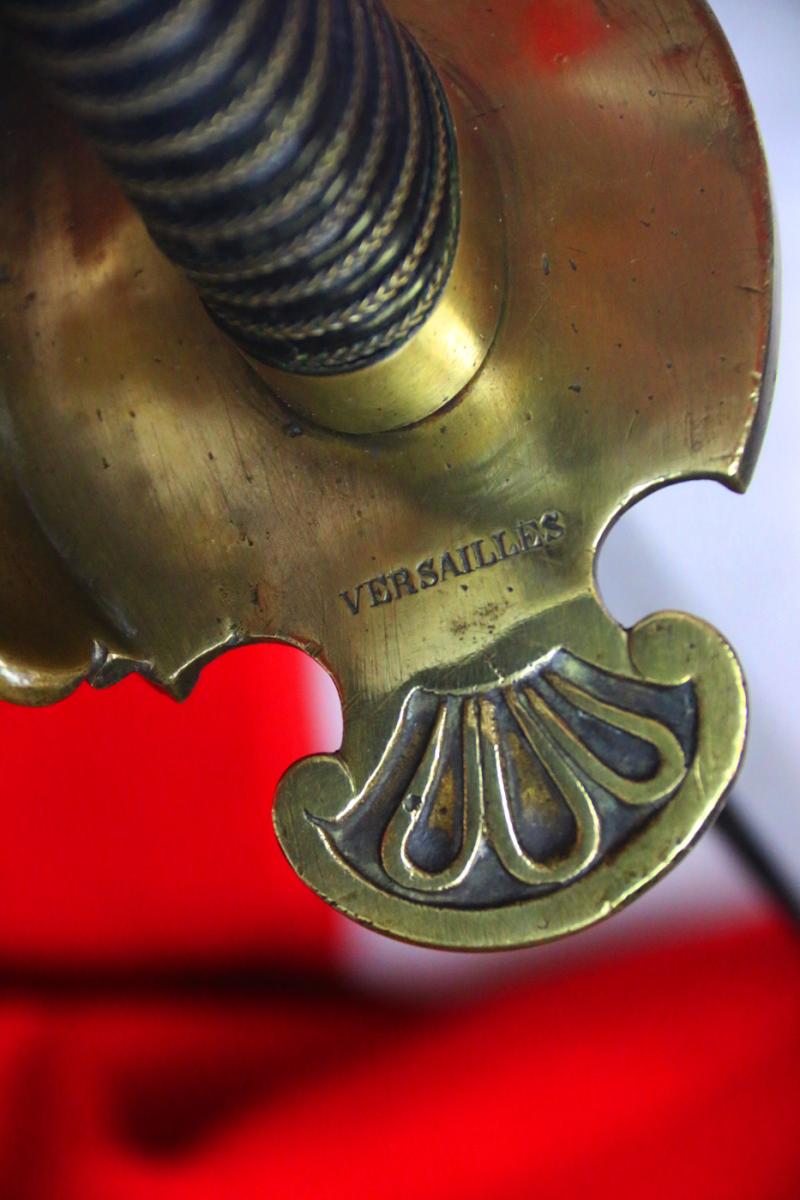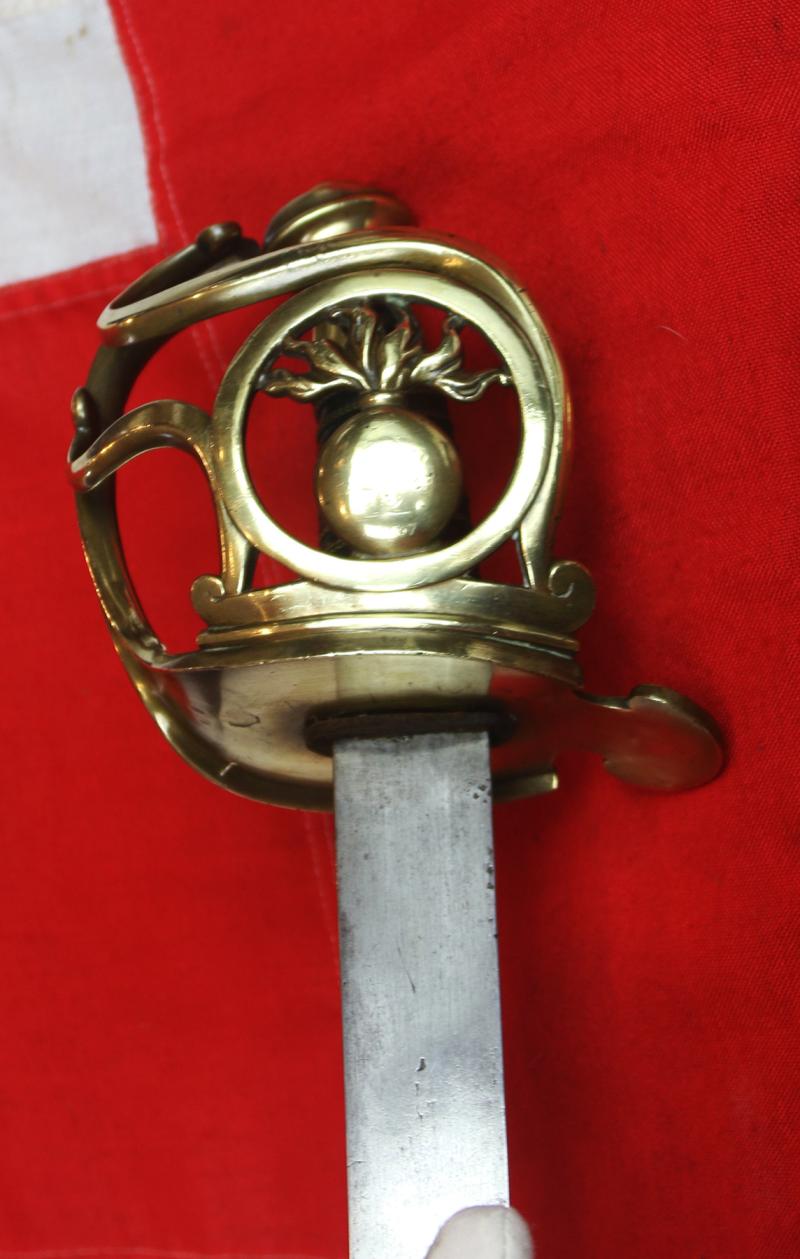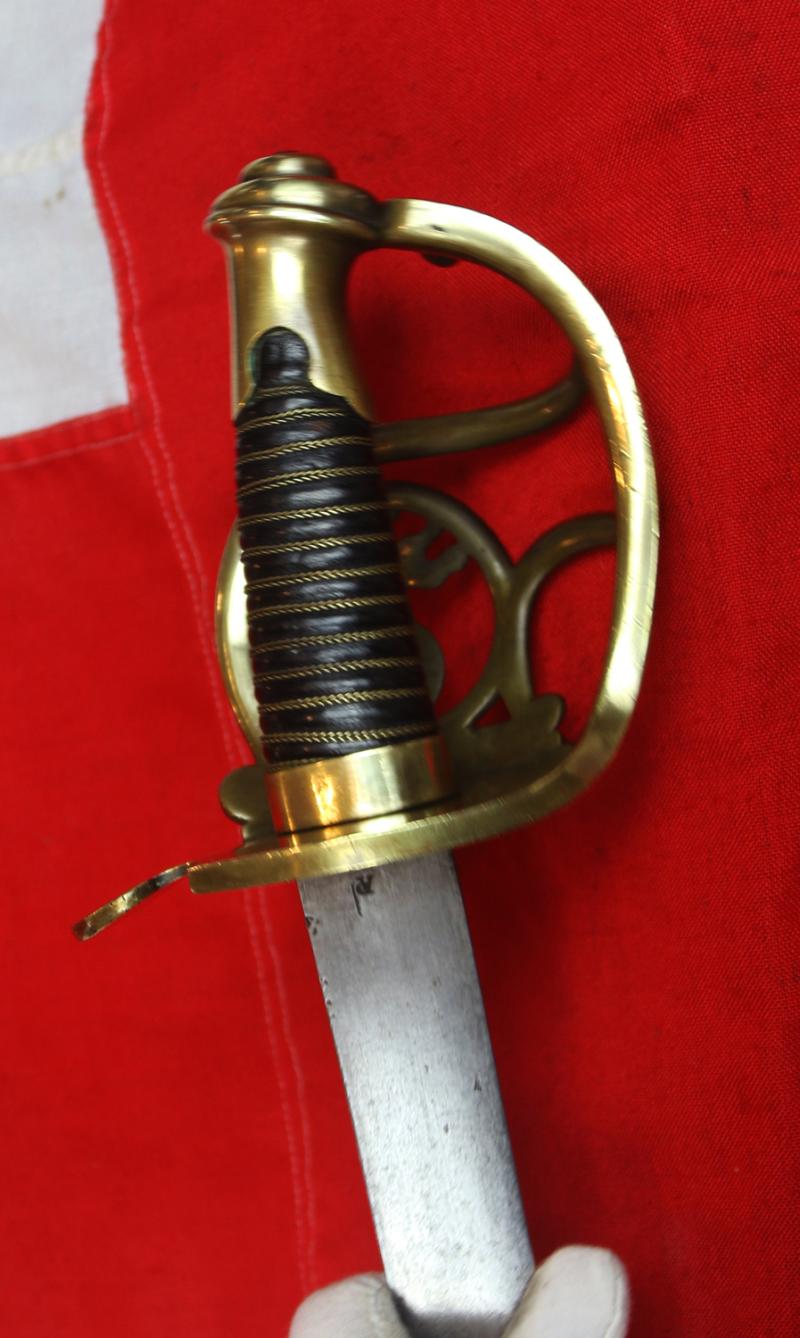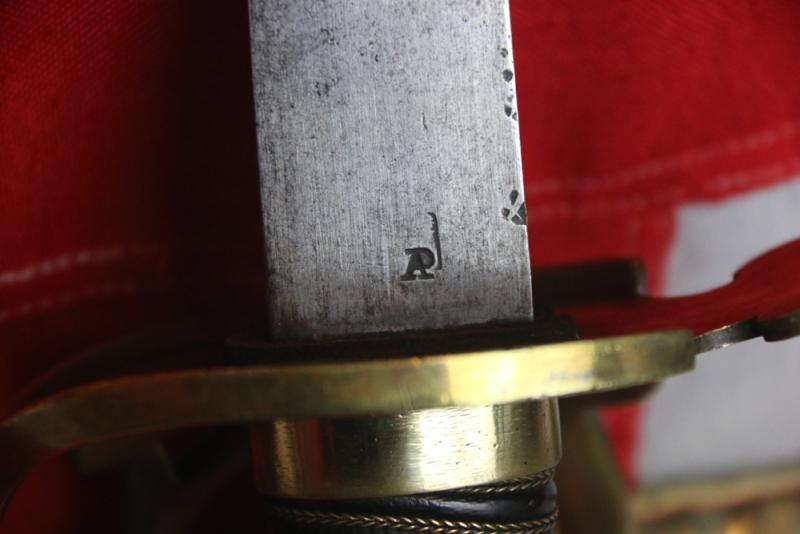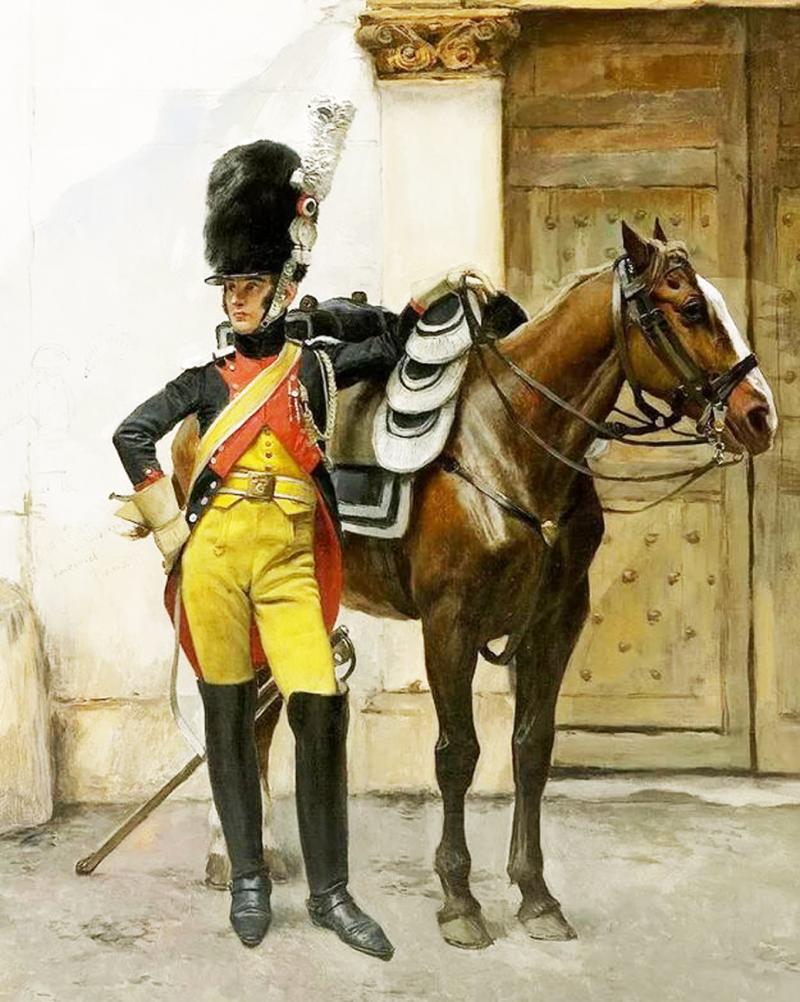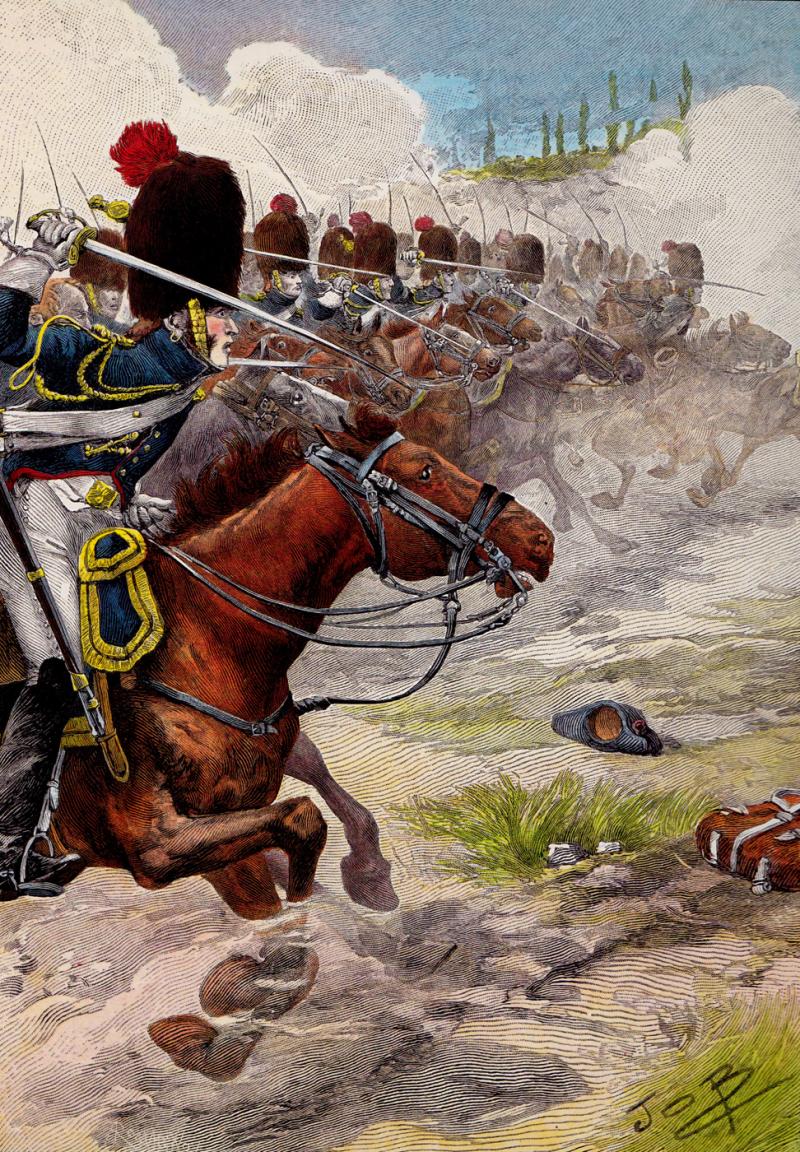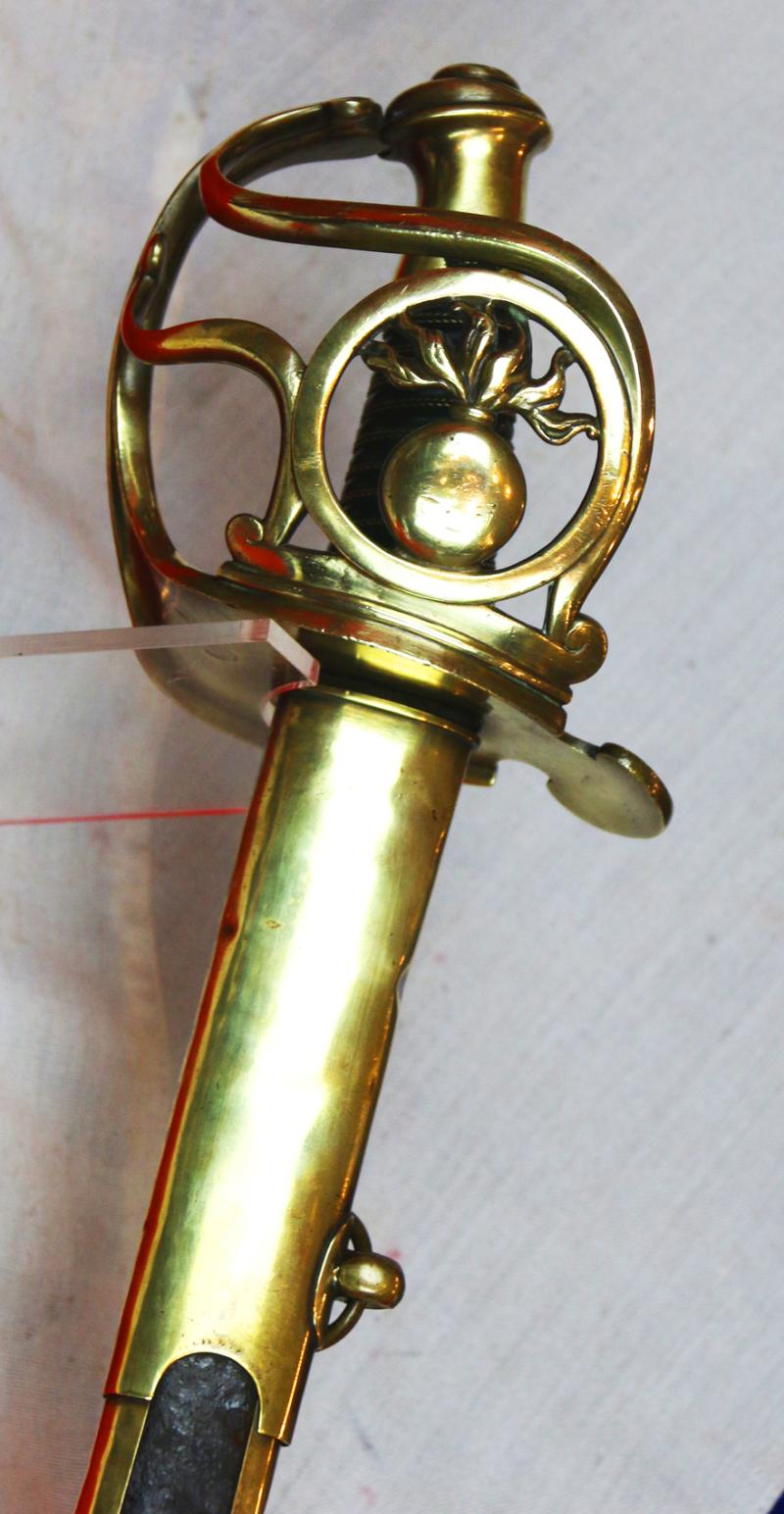NOW SOLD! Napoleonic Wars French Sabre De Grenadier À Cheval De La Garde Imperiale of the Grande Armee 1811. The Elite Senior " Vieille Garde, {Old Guard}”, Heavy Cavalry Regiment
Superb Ist Empire French Napoleonic Imperial Guard sword. With hilt manufactured by Versailles, and stamped thereon, a single knucklebow with two branches and a grenade within a circle set between the two branches. Early type 1 straight blade {as can be seen on the early cuirassier and dragoons sword} engraved on the back strap. Painting in the gallery of a French Grenadier a Cheval de la Garde Imp. with his type 1 straight bladed sword .
Blade engraved Manufacture Imple De Klingenthal October 1811, and stamped at the forte AP for Atelier Precision/Paris, combined with stick and fasces. Scarce variant brass scabbard with two long ovoid window panels of leather, and a pair of hanging rings {un-banded}.
The Mounted Grenadiers of the Imperial Guard (French: Grenadiers à Cheval de La Garde Impériale) was a heavy cavalry regiment in the Consular, then Imperial Guard during the French Consulate and First French Empire respectively. They were the senior Old Guard cavalry regiment of the Imperial Guard and from 1806 were brigaded together with the Dragoons of the Imperial Guard.
A part of the Republican Consular Guard, the Grenadiers became the senior "Old Guard" heavy cavalry regiment when the Imperial Guard was founded, in 1804. Their maximum official complement was just over 1100 officers and troopers, commanded by a general of division or a seasoned general of brigade, with some of the most famous cavalrymen of the time as commander.
Rarely committed to battle during the Napoleonic Wars, they were usually kept in reserve, alongside the Emperor, during the most significant battles. When sent into action, such as during the battles of Marengo, Austerlitz, Eylau, Hanau or Waterloo, as well as during a number of actions of 1814, results were usually impressive. The regiment was disbanded in 1815, after Napoleon's downfall and the second restoration of the Bourbons.
In 1812 the battles this sword would have likely seen service, but mostly as Napoleon's personal protection reserve, would be around 30 in number including
Borodino, Moscow,
Ostrowno,
and
Winkowo
In 1813: Reichenbach and
Dresden,
Leipzig and
Hanau
In1814: La Rothiere,
Rosnay,
Champaubert,
Vauchamps,
Athies,
La Fere-Champenoise and
Paris
Then in 1815: During the war of 100 Days, upon Napoleon's return from exile in Elba,
The Battles of Quatre-Bras and
Waterloo.
To put into context, where this sword would have been used, by a Grande Armee Cheval of the Imperial Guard, in just a single days battle, at the Battle of Borodino in 1812, the fighting involved around 250,000 troops and left at least 68,000 killed and wounded, making Borodino the deadliest single-day-battle of the Napoleonic Wars and one of the bloodiest single-day battles in the military history of France before WW1.
The casualties of the battle were staggering: according to French General Staff Inspector P. Denniee, the Grande Armée lost approximately 28,000 soldiers: 6,562 (including 269 officers) were reported as dead, 21,450 as wounded. But according to French historian Aristid Martinien, at least 460 French officers (known by name) were killed in battle. In total, the Grande Armée lost 1,928 officers dead and wounded, including 49 generals. The list of slain included French Generals of Division Auguste-Jean-Gabriel de Caulaincourt, Louis-Pierre Montbrun, Jean Victor Tharreau and Generals of Brigade Claude Antoine Compère, François Auguste Damas, Léonard Jean Aubry Huard de Saint-Aubin, Jean Pierre Lanabère, Charles Stanislas Marion, Louis Auguste Marchand Plauzonne and Jean Louis Romeuf.
Suffering a wound on the Borodino battlefield was effectively a death sentence, as French forces did not possess enough food for the healthy, much less the sick; consequently, equal numbers of wounded soldiers starved to death, died of their injuries, or perished through neglect. The casualties were for a single day of battle, while the Russian figures are for the 5th and the 7th, combined. Using the same accounting method for both armies brings the actual French Army casualty count to 34,000–35,000.
Both the French and Russians suffered terrible casualties during the fighting, losing over a third of their armies. Some 52,000 Russian troops were reported as dead, wounded or missing, including 1,000 prisoners; some 8,000 men were separated from their units and returned over the next few days, bringing the total Russian losses to 44,000. Twenty-two Russian generals were killed or wounded, including Prince Bagration, who died of his wounds on 24 September. Historian Gwynne Dyer compared the carnage at Borodino to "a fully-loaded 747 crashing, with no survivors, every 5 minutes for eight hours". Taken as a one-day battle in the scope of the Napoleonic conflict, this was the bloodiest battle of this series of conflicts with combined casualties between 72,000 and 73,000. The next nearest battle would be Waterloo, at about 55,000 for the day
Code: 25274



